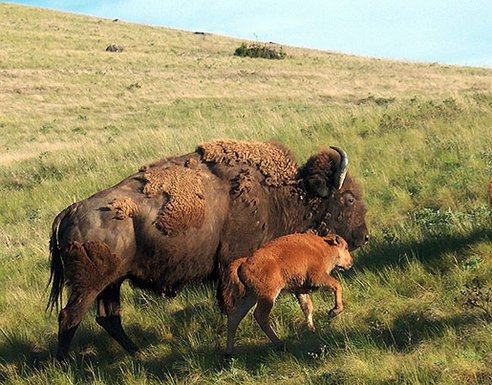We live in a very inter-connected world. This is something that conservationists have learned when studying the species that they are trying to protect; It's not good enough to create protected habitats that are isolated, like islands surrounded by roads, fences, farmlands, cities, etc. That's not how most species have evolved. Their habitats need to be connected to others via wildlife corridors if life there is to really thrive and be robust enough to survive in the long-term. Here's a few reasons why these corridors are so important:
1. Some species need to travel long distances to survive
Some species, such as wolves, grizzly bears, elks, cougars, lynx, etc, need to travel long distances to survive. Sometimes protected habitat areas are large enough to provide the needed space, but often they are too small, and without safe corridors to move around, the animals are exposed to all kinds of dangers. The corridors provide a kind of safety valve for protected habitats that are too small, allowing especially the large carnivores to find ways to roam to their heart's content between different 'islands' without being exposed to potentially fatal dangers.
2. There is no one-size-fits-all
Each wildlife corridor needs to be designed with the local species in mind. Some species will do just fine with relatively narrow corridors, while others that are less used to human presence simply won't use them. Many factors play a role in how attractive a wildlife corridor will be to animals: terrain type, vegetation cover, snow depth, topography, physical barriers of various kinds, and of course, human presence (including smells and noises).
3. They help protect genetic diversity
One of the dangers of isolated habitats is that, over time, genetic diversity will be reduced and inbreeding will lead to vulnerability to various diseases and genetic defects. Just allowingsome migration and exchange of precious genetic materials with other populations can reduce genetic risks and make species more robust in the face of all kinds of threats.
It's the same principle as with farming and forests: Monoculture are much more vulnerable than polycultures. Variety = robustness.
4. Some wildlife corridors are naturally occurring, some need to be created
Sometimes, wildlife corridors were already present and all we need to do is protect them. For example, sometimes a narrow valley between mountains will act as a natural funnel and help bring species from one area to another. But sometimes, there are no natural corridors, and nature needs our help. That's where conservation NGOs like the National Wildlife Federation, the Nature Conservancy, and others, come into play.
Wikipedia lists a few artificial wildlife corridors:
- the Paséo Pantera (also known as the MesoAmerican Biological corridor or Paséo del Jaguar)
- the Eastern Himalayan Corridor
- China-Russia Tiger Corridor
- Tandai Tiger Corridor
- the European Green Belt
- The Siju-Rewak Corridor, located in the Garo Hills of India, protects an important population of elephants(thought to be approximately 20% of all the elephants that survive in the country). This corridor project links together the Siju Wildlife Sanctuary and the Rewak Reserve Forest in Meghalaya State, close to the India-Bangladesh border. This area lies within the meeting place of the Himalayan Mountain Range and the Indian Peninsula and contains at least 139 other species of mammal, including Tiger, Clouded Leopard and the Himalayan Black Bear
- the Ecologische Hoofdstructuur is a network of corridors and habitats created for wildlife in the Netherlands
5. Governments need to play a role
Animals and plants don't care much about political borders. Many habitats overlap different countries, and many important wildlife corridors (natural or artificial) cross state lines. That's why cooperation from governments is crucial, and while it's probably too much to expect that legislators will be very knowledgeable in that area, we should at least make sure that they are disposed to listen to the experts and make forward-looking decisions to help protect many precious species and habitats.
And of course, you can play a role too, either by supporting your favorite environmental NGO, or by bringing habitat conservation to the attention of your political representatives!
Source: Treehugger
















0 comments:
Post a Comment